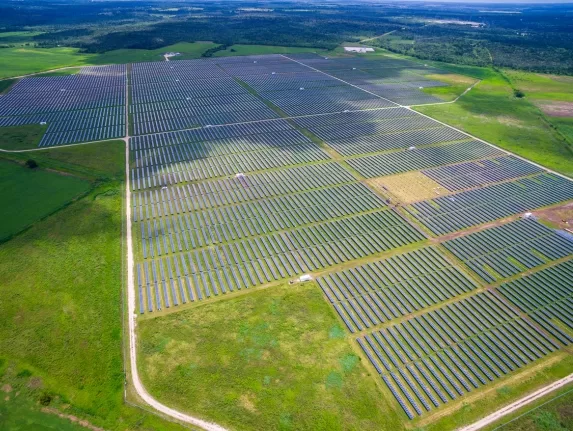Heatwaves in Texas have seen temperatures soaring beyond 100°F for two straight weeks, pushing electricity demand to near-record levels. However, contrary to the state’s well-known reliance on oil and natural gas, it’s the rapidly growing renewable energy sources, solar and wind, that have played a pivotal role in powering air conditioning units and keeping residents cool amid the sweltering conditions.
Texas has witnessed an exponential growth in its renewable energy sector, particularly in solar power, doubling since the beginning of last year and slated to double again by the end of next year, according to data from the Electric Reliability Council of Texas (ERCOT). Texas is now a leading contender in solar power generation, rivaling California. The state boasts over 12,600 megawatts of solar farms, capable of powering more than 2.5 million homes, and contributing to about 15% of the total energy during the heatwave. Solar has been particularly instrumental in averting potential brownouts during peak afternoon hours.
These developments have raised eyebrows among Texas lawmakers, traditionally advocates for oil and gas. Proposed bills that sought to impose additional costs and regulations on the solar and wind industries and limit the number of new renewable projects in the state have, however, failed to pass. Nonetheless, skepticism and concern over the dependability of renewable energy persist among many Republican lawmakers.

Solar Power Resilience Amidst Texas Heatwaves
The heatwave has highlighted how far Texas has come in its renewable energy journey. Over the past three years, the state has added solar power equivalent to 12 nuclear reactors, bringing it on the verge of outpacing California as the leading producer of electricity from solar farms. The solar boom has also dented the demand for energy from the state’s remaining coal plants, promising substantial environmental benefits. Texas, being the largest emitter of greenhouse gases in the country, can potentially leverage solar power to substantially reduce its environmental footprint.
The heatwave sparked a grid debate. It was severe, echoing the 2021 winter storm. That storm caused power loss and 200 deaths, raising reliability concerns. The discourse is now about renewables. The grid was pushed to its limit but no wide outages occurred. This questions claims of renewables disrupting stability.
Texas’s energy market champions competition. It has boosted renewables more than most states. Wind farms came first, now it’s solar arrays, as solar costs plummet. Political debates and regulations exist, but solar thrives in Texas. It promises a sustainable future and mitigates extreme weather effects.
Texas faces grid stability and energy mix challenges. Yet, it’s clear the future is greener. Even here, in an oil and gas stronghold, solar and wind are making a mark. They prove their worth during trying times.